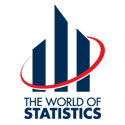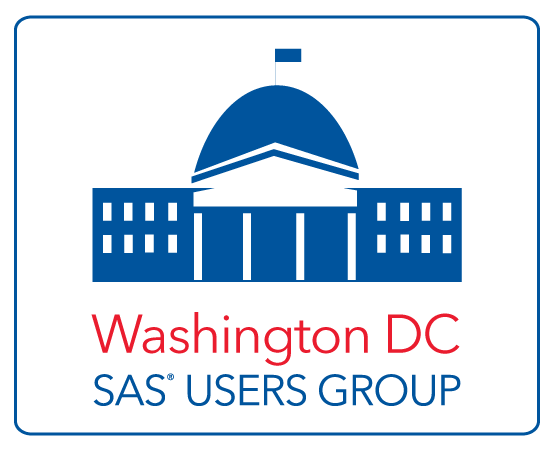November 2007
Contents:
- Book Signing at Reiter's Books
- Seminars, Symposia & Call For Papers:
- Education Announcements:
- Students' Corner
- 2008 Masters and Doctoral Programs, Department of Statistics, George Mason University
- Spring 2008 Courses, Joint Program in Survey Methodology (JPSM), University of Maryland, College Park
- Short Courses (includes JPSM short courses)
- SIGSTAT Topics for Fall 2007
- Employment Opportunities
- Note From The WSS NEWS Editor
- WSS People
- PDF Versions:
(Requires Adobe Acrobat Reader)
Newsletter
Area Meetings and Courses
Save the Date
December 11th 12:30-2:00pm
Book Signing at Reiter's Books
Jana Asher, David Banks, and Fritz Scheuren
Statistical Methods in Human Rights
Food and beverages provided.
All three authors will be there:
Reiter's Books
1990 K Street NW
Washington DC
Sponsor: WSS Human Rights Section
Look forward to seeing you there
Return to top
2008 Masters and Doctoral Programs
Department of Statistics
George Mason University
The Department of Statistics, George Mason University (website http://statistics.gmu.edu) is accepting applications for its masters and doctoral programs for Fall 2008. The Department also announces the following graduate course offerings in Spring 2008. All graduate courses require 3 semesters of calculus.
| STAT 544 W 4:30-7:10 p.m. | Prof. Bell |
| Applied Probability | Prereq: STAT 344 |
| STAT 554 R 7:20-10:00 p.m. | Prof. Sutton |
| Applied Statistics | Prereq: STAT 344 |
| STAT 652 T 7:20-10:00 p.m. | Prof. Diao |
| Statistical Inference | Prereq: STAT 544 |
| STAT 655 Th 7:20-10:00 p.m. | Prof. Miller |
| Analysis of Variance | Prereq: STAT 554 and SAS |
| STAT 660 Th 4:30-7:10 p.m. | Prof. Tang |
| Biostatistical Methods | Prereq: STAT 535 or 554 |
| STAT 674 Th 7:20-10:00 p.m. | Dr. Jang |
| Survey Sampling II | Prereq: STAT 554, 574 and SAS |
| STAT 789 M 7:20-10:00 p.m. | Prof. Habib |
| Computational Intelligence | Prereq: STAT 554 |
| STAT 875 W 4:30-7:20 p.m. | Prof. Carr |
| Scientific and Statistical Visualization | Prereq: STAT 654 |
| STAT 971 W 4:30-7:10 p.m. | Prof. Rosenberger |
| Probability Theory | Prereq: MATH 315, STAT544 |
| STAT 973 M 4:30-7:10 p.m. | Prof. Gentle |
| Mathematical Statistics II | Prereq: STAT 972 |
Students' Corner
This past October 13, I attended the 3rd Annual Shenandoah Undergraduate Mathematics and Statistics (SUMS) conference, a one-day conference promoting undergraduate research in mathematics, statistics, and their applications. It was held at James Madison University, and featured contributed research talks by undergraduate students, poster sessions with prizes.
There were also invited addresses by Dr. Ann Trenk of Wellesley College and Dr. Michael Krebs of California State University, Los Angeles. Both of these talks were delivered in a lively, informal manner, at a level appropriate for students. Dr. Trenk gave a talk on graph theory, while Dr. Krebs discussed some of the mathematics sudoku puzzles. (Interestingly, Dr. Krebs used some of the graph theory methods that Dr. Trenk had earlier discussed.) If only all technical talks were so fun! And the student presentations were surprisingly sophisticated. It was reassuring to see the students dealing with difficult topics with skill and verve.
I was of course especially interested in the statistical presentations, and I note that out of 28 talks, only four were statistical in nature, the rest being mathematical presentations. Similarly, out of about 32 posters, only about four were about statistics. The conference organizers would very much like to increase the representation of statistical presentations next year. So, if you are an undergraduate student, consider presenting a talk or poster on a statistical topic at next year's SUMS conference. Or, if you teach undergraduate students, please encourage them to attend and perhaps present at SUMS. With free registration, a complimentary lunch, and some travel support, this is an excellent opportunity for undergraduate students to show off their knowledge. If you're interested, I would suggest checking the SUMS website sometime around August 2008, to obtain early information on the conference. The website is: http://www.math.jmu.edu/~brownet/SUMS
Mu Sigma Rho is a national honor society for students of statistics, both undergraduate and graduate. If you are a good student, you may be eligible to join. See this web page for eligibility requirements: http://www.stat.sc.edu/~edwards/msr.membership.reqs.html
The main page for Mu Sigma Rho is here: http://www.stat.sc.edu/msrnatl.html
If you are eligible to join the society and you are enrolled in a program in the greater Baltimore-Washington metropolitan area, the Washington Statistical Society will cover your initiation fee for the Mu Sigma Rho society. Contact me at jmm97@georgetown.edu for further information.
Earlier this month I received an email from Dr. Dale Atkinson of the Research and Development Division of the National Agricultural Statistics Service in USDA, asking me to circulate a job offer. His group would like to recruit new mathematical statisticians into the agency this year, and in particular are interested in hiring several masters-level people into their Research and Development Division in Fairfax, Virginia. There are also on-going opportunities to start in one of their 45 Field Offices around the country, which is very attractive to some students. You can find the flyer here: http://bist.pbwiki.com/f/Math_Stat_Recruitment_Flyer.pdf
Dr. Carol Blumberg of the Department of Energy recently made available to me her list of contacts for possible internships and jobs. You can find it here: http://bist.pbwiki.com/f/contactpublic.pdf
Some of these contacts may be obsolete, but there are many possibilities here. We hope that if you're looking for ideas for internships or jobs, you might mine this extensive list for useful leads.
Last month, I presented B.'s problem, which involved an extension of the Gaussian log-likelihood function to time-series analysis. Yang's solution to B.'s problem can be found here: http://bist.pbwiki.com/f/solution0001.pdf
My friend, Steven J. Fromm of Bethesda, MD, came up with essentially the same solution, and noted that it amounts to completing the square. (Exponents sum when terms are multiplied; the completion of the square is performed on the exponents.)
J.P. is a graduate student in the Interdisciplinary Neuroscience Program at Georgetown University,and recently threw a methods question at me. He is developing an experiment that will examine brain activations associated with keyboard typing, and wants to compare typists of two different skill levels: a high-skill group and a low-skill group. Previous studies have determined that one can discern dissociable performance effects between groups of typists if and only if there is least a 30 word-per-minute (WPM) difference between them, and the standard deviation does not exceed 30 WPM. E.g. one group may have a mean of 55 WPM and the other may have a mean of 85. Note that J.P.'s experimental measurement is not WPM, but brain activity as measured by brain scans. He intends to maximize differences in brain activity between two groups by manipulating the skill levels of the two groups.
So, J.P.'s question is, is there a way to optimally select subjects based on their WPM rate such that after the collection of 32 subjects there are 16 subjects in each group, where there is at least a 30 WPM mean difference between the groups and a maximum of 30 WPM standard deviation within each group? Is it possible to design an algorithm which takes as input the WPM of each subject as they are collected, and then suggests the best WPM for the next subject or set of subjects? For example, after collecting 15 subjects the algorithm might suggest that the next subject or set of subjects collected should have a WPM of 75 or less.
The problem is that the variance of the WPM's of the student population is unknown, at least at the outset. Would it be best to first obtain measurements on 16 subjects, use this as an estimate of the population variance, and then collect the next 16 subjects by weighting towards the upper and lower bounds of the original 16? Or could subject recruitment be performed continuously as data is acquired, use the spread of WPM's acquired thus far to estimate the population variance? From this estimate, perhaps incoming subject selection could be skewed to the highest or lowest 1/3 WPM of the sample acquired thus far.
Or perhaps J.P. should simply ask only people who consider themselves either very good typists or very poor typists to participate.
The problem seems to me to be similar to problems in early clinical trials where one develops algorithms to terminate a study early if too many subjects are experiencing serious adverse effects. Perhaps a Bayesian approach may be applicable, or perhaps a method based on Markov Chains. What do you think?
If you would like to offer some ideas on J.P.'s Problem, join the discussion at: http://groups.google.com/group/jps-problem/topics
The latest issue of STATS magazine arrived in my mailbox last week. The cover story is about optimizing a paper helicopter! Let me take this opportunity to again recommend, if you're a student of statistics, that you obtain student membership in the ASA, if you haven't already, if only just to receive this magazine. Join online here: https://www.amstat.org/membership/index.cfm?fuseaction=onlineapp Scroll down to the section entitled "STUDENT". It's only $10!
Also consider student membership in the local chapter of the ASA, the Washington Statistical Society. You can join online at: http://wws.scs.gmu.edu/~wss/join.html.
That's all for this month. If you have any feedback on this column or ideas for future topics, please email me at jmm97@georgetown.edu. Your thoughts will be greatly appreciated.
Joe Maisog
Georgetown University / Medical Numerics
SIGSTAT Topics for Fall 2007
November 21, 2007: Survival Models in SAS: PROC LIFETEST - Part 2
Continuing the series of talks based on the book "Survival Analysis Using the SAS System: A Practical Guide" by Paul Allison, in November we'll finish Chapter 3: Estimating and Comparing Survival Curves with PROC LIFETEST. Topics discussed are:
- log-rank (Mantel-Haenszel.), Wilcoxon, and likelihood ratio tests for differences in survivor functions
- the Life Table method for estimating the survival and hazard functions
- testing for the effects of covariates
See http://www.sas.com/apps/pubscat/bookdetails.jsp?pc=55233 for more information.
December 19, 2007: Survival Models in SAS: PROC LIFEREG - Part 1
Continuing the series of talks based on the book "Survival Analysis Using the SAS System: A Practical Guide" by Paul Allison, in November we'll start Chapter 4: Estimating Parametric Regression Models with PROC LIFEREG. Topics discussed are:
- the Accelerated Failure Time model
- alternative distributions
- categorical variables and the CLASS statement
- maximum likelihood estimation
- hypothesis tests
See http://www.sas.com/apps/pubscat/bookdetails.jsp?pc=55233 for more information.
SIGSTAT is the Special Interest Group in Statistics for the CPCUG, the Capital PC User Group, and WINFORMS, the Washington Institute for Operations Research Service and Management Science.
All meetings are in Room S3031, 1800 M St, NW from 12:00 to 1:00. Enter the South Tower & take the elevator to the 3rd floor to check in at the guard's desk.
First-time attendees should contact Charlie Hallahan, 202-694-5051, hallahan@ers.usda.gov, and leave their name. Directions to the building & many links of statistical interest can be found at the SIGSTAT website, http://www.cpcug.org/user/sigstat/.
Return to topNote From The WSS NEWS Editor
Items for publication in the December issue of the WSS NEWS should be submitted no later than November 10, 2007. E-mail items to Michael Feil at michael.feil@usda.gov.
Return to topClick here to see the WSS Board Listing (pdf)
Return to top






